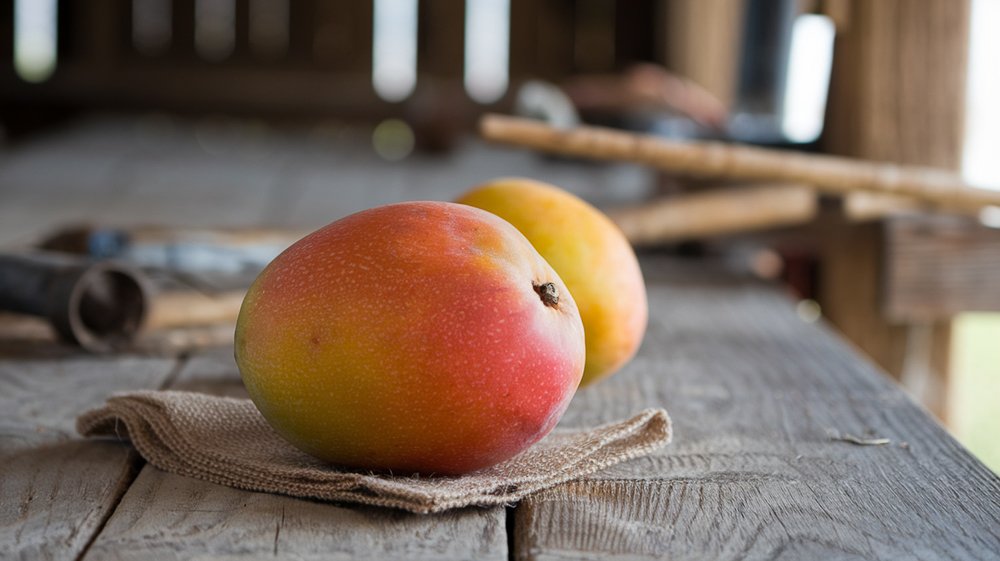Saturday, 11 October 2025

Image Source: mangopedia.org
In a quiet yet steady march towards global recognition, Gujarat has crossed a significant milestone in mango exports, shipping over 3,000 metric tonnes in the past five years. The 2024–25 season alone accounted for 856 metric tonnes, signaling both market expansion and systemic improvements in the state’s horticultural export infrastructure. At the heart of this success lies the Kesar mango, a fragrant variety native to the Gir region, which continues to find enthusiastic buyers in discerning markets such as the United States and South Africa.
This surge in exports is not merely a story of demand; it is the result of strategic infrastructural interventions. Gujarat’s commitment to improving post-harvest logistics is embodied in the Gujarat Agro Radiation Processing Facility in Bavla, near Ahmedabad. Operational for five years now, the unit has processed 805 metric tonnes of irradiated mangoes, including 224 metric tonnes this year alone. Certified by the United States Department of Agriculture’s Animal and Plant Health Inspection Service, the Bavla facility has emerged as a critical node in the state’s agri-export value chain. It is one of only four such USDA-compliant irradiation units in India and the first in Gujarat.
Before this facility came online, mango growers were compelled to route their produce through Mumbai, incurring added transport costs and facing heightened risks of spoilage. The Bavla facility, coupled with an integrated pack house and a perishable air cargo terminal managed by the Gujarat Agro Industries Corporation, now enables a seamless export process directly from Ahmedabad. This localized export processing has improved fruit shelf life, reduced wastage, and created cost efficiencies that are now translating into stronger farmer participation in export-oriented cultivation.
Mango cultivation in Gujarat spans approximately 1.77 lakh hectares, accounting for 37 percent of the state’s total fruit cultivation area. Production now exceeds one million metric tonnes annually. Districts such as Valsad, Navsari, Junagadh, Gir Somnath, and Bhavnagar dominate the mango belt, with Valsad alone cultivating over 38,000 hectares. Around 75,000 to 80,000 farmers are engaged in mango farming across the state, reflecting both scale and socio-economic importance.
The Kesar mango, Gujarat’s flagship variety with a Geographical Indication (GI) tag, is central to the state’s export strategy. Cultivated predominantly in the Gir region, Kesar is prized for its saffron hue, rich aroma, and balanced sweetness. Its growing international appeal aligns with the increasing consumer preference for premium, traceable, and exotic fruit varieties. With the global fruit market leaning towards origin-based branding and high-flavor cultivars, Kesar has found a niche that Gujarat is rapidly learning to scale.
Beyond GI-tagged produce, Gujarat’s agricultural universities and the state government have ramped up training, certification, and export facilitation efforts. These institutional supports are helping farmers not just meet export compliance standards, but also improve on-farm practices and post-harvest handling. The broader vision appears to be the evolution of Gujarat from a producer of quantity to a supplier of globally competitive quality.
As the climate challenges facing fruit growers across the world intensify, Gujarat’s model of decentralised export infrastructure, irradiation-led phytosanitary compliance, and varietal branding offers a compelling blueprint. While the current export volumes remain modest in the context of India’s total mango output, the last five years indicate an important shift—from opportunistic exports to an integrated, quality-driven ecosystem.
The success of Kesar mangoes on global shelves is not just a testament to the fruit’s sensory appeal, but to the policy, infrastructure, and institutional scaffolding quietly built around it. Gujarat’s mango export journey, marked by steady tonnage and deeper market penetration, hints at the possibilities of what can be achieved when agri-export ambition meets logistical intelligence.